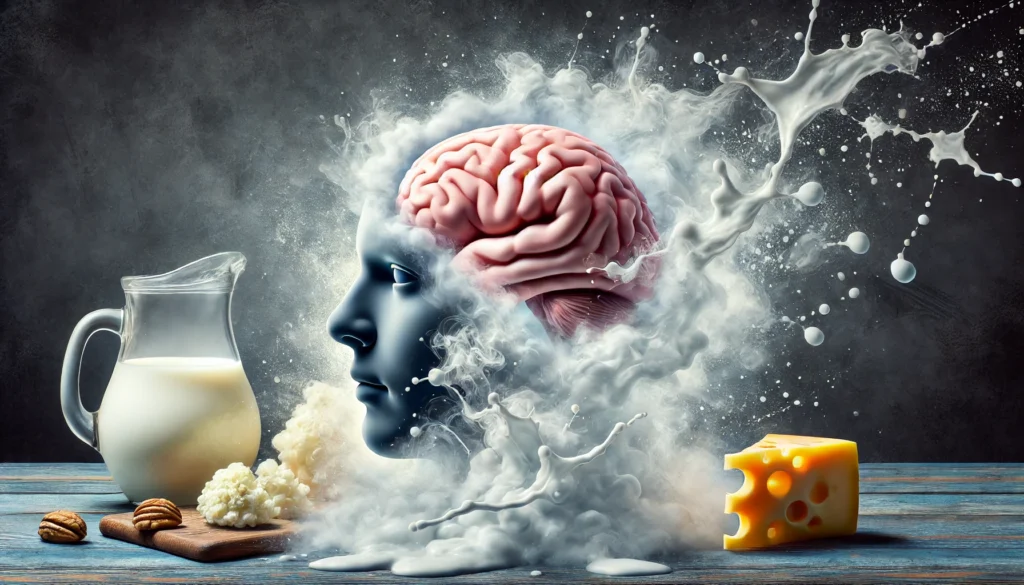The Hidden Dangers of Nutmeg Hallucinations - Uncovering the Truth

What is Nutmeg Hallucination?
Nutmeg, a common spice found in many kitchens, holds a secret that few are aware of. When consumed in excessive amounts, nutmeg can induce hallucinations, a phenomenon known as nutmeg hallucination. But what exactly is behind this mind-altering effect?
The Science Behind Nutmeg Hallucination
Nutmeg contains a compound called myristicin, a naturally occurring chemical that has been found to have psychoactive properties. Myristicin is responsible for the mind-altering effects experienced when nutmeg is consumed in large quantities. When ingested, myristicin is metabolized into 3-methoxy-4,5-methylenedioxyamphetamine (MMDA), a substance similar to MDMA, also known as ecstasy.
How Does Nutmeg Hallucination Occur?
Nutmeg hallucination occurs when an individual ingests more than the recommended amount of nutmeg, typically exceeding 5-10 grams. At this threshold, the myristicin in nutmeg starts to take effect, inducing a range of symptoms, including:
- Altered perception and visual distortions
- Disorientation and confusion
- Increased heart rate and blood pressure
- Nausea and vomiting
- Headaches and dizziness
It's essential to note that the effects of nutmeg hallucination can vary greatly depending on the individual, the amount consumed, and the method of ingestion. While some may experience mild effects, others may face severe consequences.
Effects of Nutmeg Hallucination
Understanding the Risks
Nutmeg, a common spice found in many kitchens, has a dark side. When consumed in large quantities, nutmeg can produce hallucinations, but at a steep price. The effects of nutmeg hallucination can be devastating and long-lasting.
Common Symptoms
Hallucinations, drowsiness, dizziness, nausea, and confusion are common symptoms of nutmeg intoxication. These effects can be intense and disrupt daily life. Users may experience vivid visuals, altered perceptions, and a distorted sense of reality.
Severe Consequences
In severe cases, nutmeg hallucination can lead to more dangerous effects, including dry mouth, disorientation, and increased heart rate. These symptoms can signal a serious health crisis, requiring immediate medical attention.
The Hidden Dangers
Despite the seemingly harmless nature of nutmeg, the spice poses a significant threat to mental and physical health. The hallucinations and side effects can lead to accidents, injuries, and long-term psychological damage.
A Call to Action
It's essential to be aware of the risks associated with nutmeg hallucination. If you or someone you know is experimenting with nutmeg, seek help immediately. Remember, the spice is not a toy, and its effects can be devastating.
Risks and Dangers of Nutmeg Hallucination
Nutmeg, a common spice found in many kitchens, has been used for centuries as a hallucinogen. However, the risks and dangers associated with nutmeg hallucination are often overlooked.
The Hidden Dangers of Nutmeg Hallucination
Nutmeg hallucination can be dangerous, especially when combined with other substances or in individuals with pre-existing medical conditions. The active ingredient in nutmeg, myristicin, can cause a range of negative side effects, including:
- Convulsions and seizures
- Palpitations and arrhythmias
- Increased heart rate and blood pressure
- Dehydration and electrolyte imbalance
- Psychotic episodes and paranoia
The Devastating Consequences of Nutmeg Hallucination
The negative side effects of nutmeg hallucination far outweigh any perceived pleasure or benefits. Long-term use can lead to:
- Dependence and addiction
- Permanent damage to the brain and nervous system
- Increased risk of mental health disorders, such as schizophrenia and depression
- Impaired cognitive function and memory loss
- Strained relationships and social isolation
In conclusion, the risks and dangers of nutmeg hallucination are real and should not be taken lightly. If you or someone you know is struggling with nutmeg addiction, seek help immediately.
Treating Nutmeg Hallucination
Nutmeg hallucination can be a harrowing experience, and treating it requires a thoughtful approach. While the effects are temporary, it's essential to address the situation with care to prevent any long-term consequences.
Supportive Care: The Primary Treatment
Treatment for nutmeg hallucination typically involves supportive care, such as:
- Hydration: Drinking plenty of water helps flush out the myristicin, the primary psychoactive compound in nutmeg, from the body.
- Rest: Allowing the individual to rest and relax can help their body recover from the effects of nutmeg.
Medical Attention: When Necessary
In severe cases, medical attention may be necessary to address any complications or underlying conditions, such as:
- Dehydration: If the individual is severely dehydrated, medical professionals may need to administer IV fluids.
- Underlying conditions: Certain conditions, like anxiety or psychosis, may be exacerbated by nutmeg hallucination. Medical attention can help address these underlying issues.
- Overdose: If the individual has consumed a large amount of nutmeg, medical attention may be necessary to prevent any long-term damage.
It's crucial to seek medical help if the individual experiences severe symptoms, such as increased heart rate, blood pressure, or body temperature, or if they show signs of extreme agitation, paranoia, or hallucinations.

















Comments ()